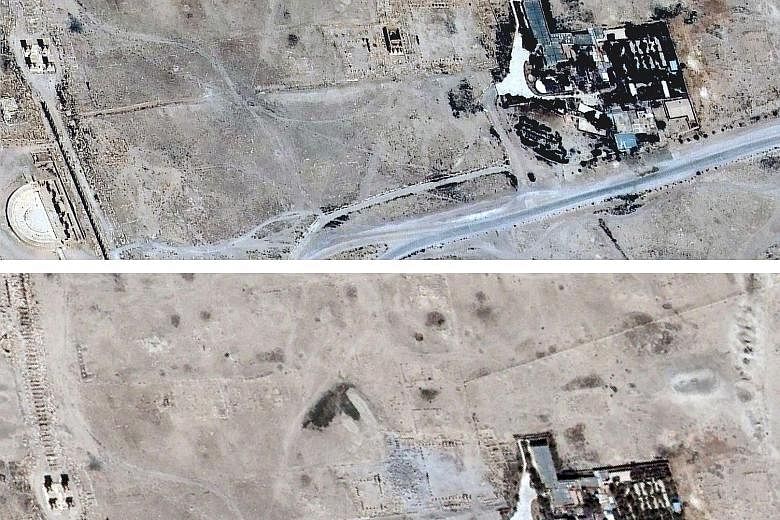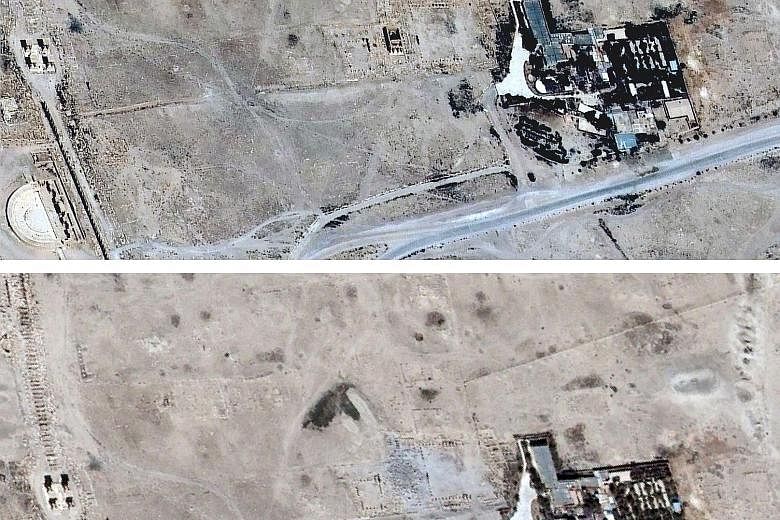BEIRUT • Islamic State in Iraq and Syria (ISIS) militants have razed a fifth-century Roman Catholic monastery and blown up one of the best-preserved first-century temples in Palmyra, the ancient Syrian city that is one of the world's most important archaeological sites, according to government officials and local activists.
And that was just this past week - in one Syrian province.
The United Nations (UN) training and research agency, Unitar, said last Friday that satellite images had confirmed the destruction of the Baal Shamin temple in Palmyra.
Much like the grinding slaughter of human beings, the ravaging of irreplaceable antiquities in Syria and Iraq has become something of a grim wartime routine.
Yet, the cumulative destruction of antiquities has reached staggering levels that represent an irreversible loss to world heritage and future scholarship, archaeological experts and antiquities officials say.
The carnage has accelerated in recent months as ISIS has stepped up its deliberate demolition and looting, piling onto battle damage caused by government forces and other insurgents in Syria's four-year civil war.
That has brought antiquities lovers on all sides to a new level of despair. "I feel very weak, very pessimistic," Mr Maamoun Abdulkarim, Syria's director-general of antiquities, said last Monday in a phone interview from Damascus, adding that with his inability to protect Palmyra, "I became the saddest director-general in the world".
Syria's antiquities, including cities that for thousands of years have been among the world's most important crossroads, are "not for the government or the opposition, they are for all Syrians", the director-general said. "It's for you also - for American people, for European people, for Japanese people. It's all your heritage."
Ms Irina Bokova, the director-general of Unesco, the UN's cultural body, in a statement last Monday called the destruction by ISIS "a new war crime and an immense loss for the Syrian people and for humanity".
ISIS has said that the historical objects and sites it destroyed were heresy to its ideology, which is rooted in Wahhabism.
In Palmyra, the group has also blown up two historic tombs, one of a Shi'ite saint and another of a Sufi scholar, because it considers them to be forms of idolatry.
In March, ISIS released videos showing its militants shooting at and bulldozing Hatra and Nimrud, ancient sites in northern Iraq.
The militants have also taken advantage of "an already-thriving trade in looted antiquities" that had been established during years of conflict in Iraq and Syria, according to Dr Amr al-Azm, a professor of Middle East history and anthropology at Shawnee State University, for the Middle East Institute.
NEW YORK TIMES


